Stop us if you’ve heard this before, but we’ve got a multi-day severe weather outlook to start the upcoming week.
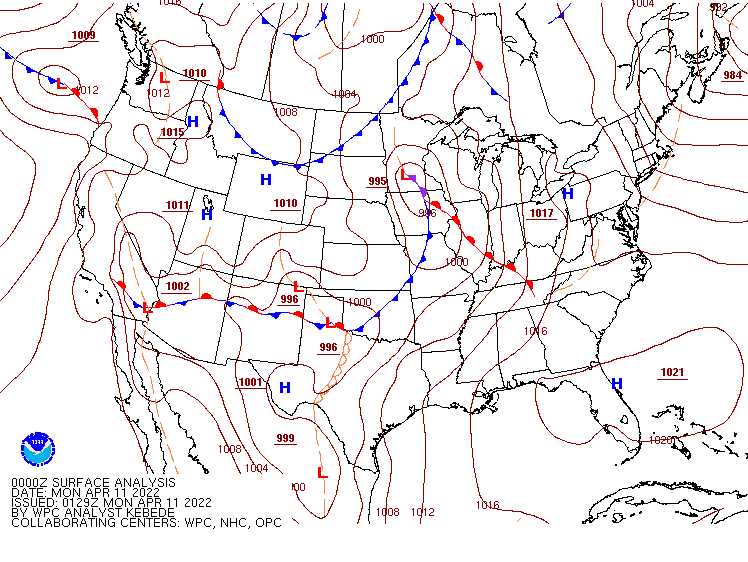
A low pressure system will move across the Southern Plains states today, producing showers and thunderstorms. Some of the storms may become strong to severe from parts of central Texas northeastward into the Middle Mississippi Valley. The main threat with these storms will be large hail, but some storms may also produce strong winds, heavy downpours, and tornadoes. This is just the start of what is to come.
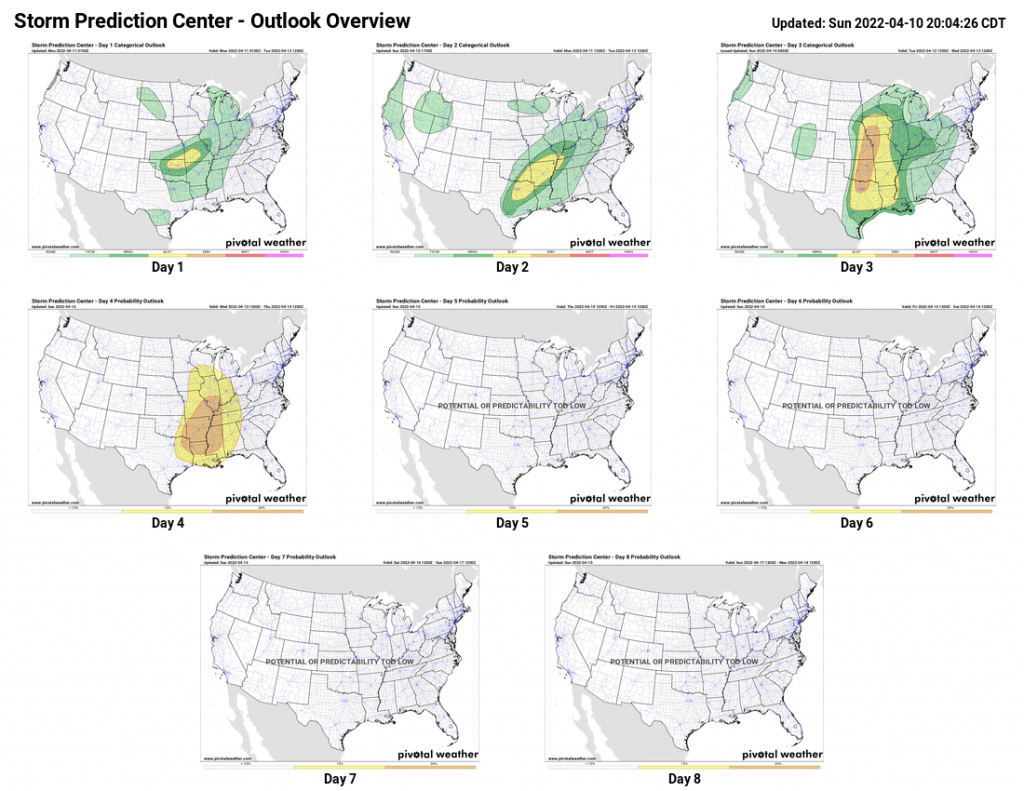
A stronger storm will develop across the central Rockies on Tuesday, heading toward the Northern Plains and Upper Midwest on Wednesday. Strong to severe thunderstorms are expected across a very large area as warm, humid air flows northward from the Gulf of Mexico ahead of the storm and much colder air settles southward from Canada behind it. That airmass may produce some record highs across southern Texas during Tuesday and Wednesday, with temperatures in the upper 90s and lower 100s across the Rio Grande Valley.
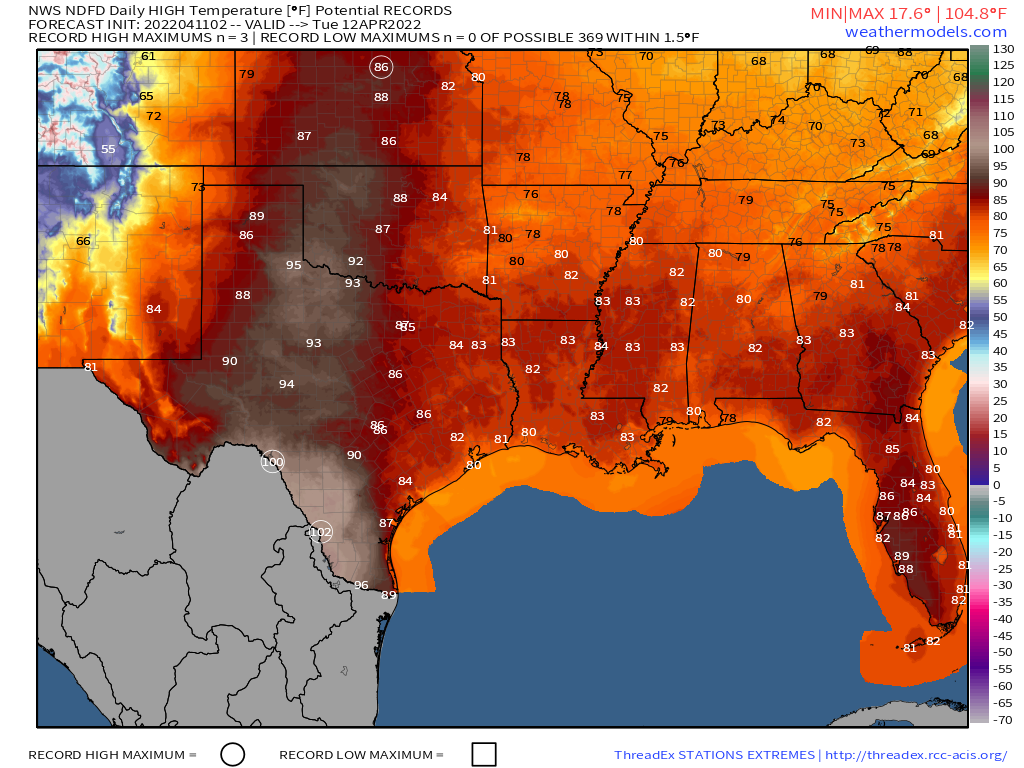
On Tuesday the severe weather threat exists from eastern Texas and the eastern Plains States into much of the Mississippi Valley. By Thursday, the threat will shift eastward slightly, continuing across the Mississippi Valley, and spread into parts of the Ohio and Tennessee Valleys. Many storms will produce large hail, damaging winds, torrential downpours, and tornadoes. The threat will shift into the Southeast and Mid-Atlantic states by Thursday, but on a more limited basis.
To the north, as the system moves into Northern Plains later Tuesday, snow will develop in parts of the Dakotas and Minnesota as well as south-central Canada. Snow will become heavy and winds will increase, resulting in blizzard conditions across parts of the region, The system will slow down, with snow and gusty winds continuing through the day on Wednesday and possibly into early Thursday. Snowfall totals of 1-2 feet are possible in parts of the region, but wind gusts of up to 50 mph will create significant blowing and drifting snow.
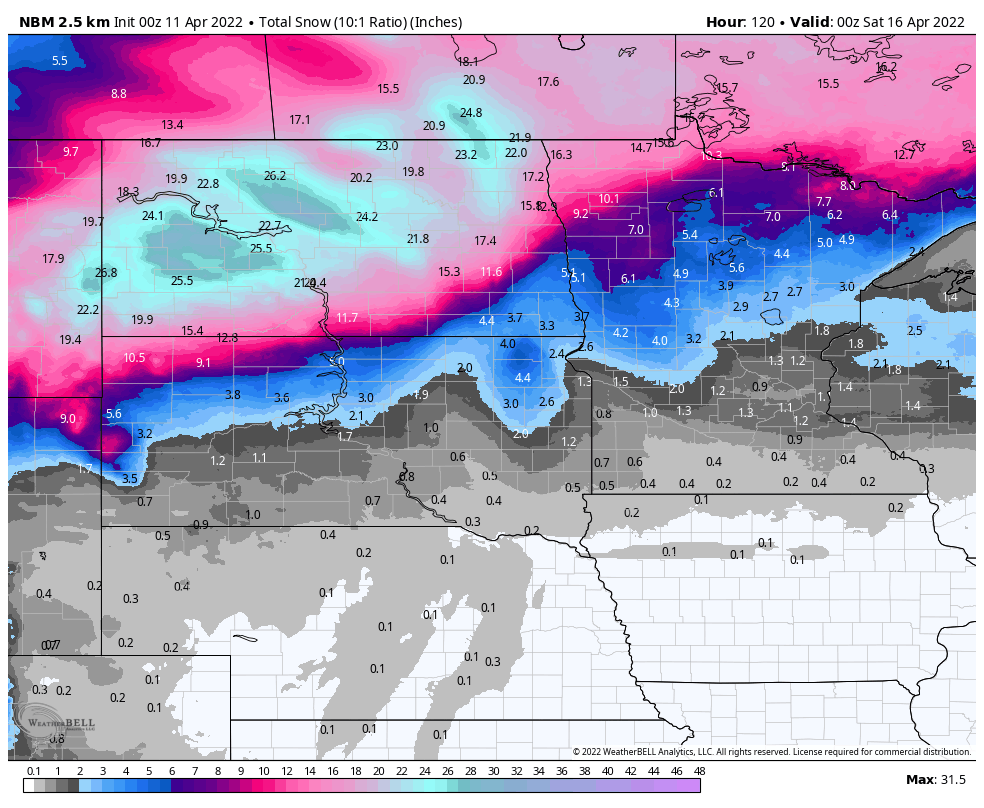
Behind the storm, a much colder airmass will settle into Rockies and Plains states, Temperatures will be as much as 15 to 30 degrees below normal for Wednesday and Thursday. Some record lows are possible in parts of the Northern Rockies and Northern Plains during the latter half of the week as temperatures drop into the single numbers and teens across a large area.
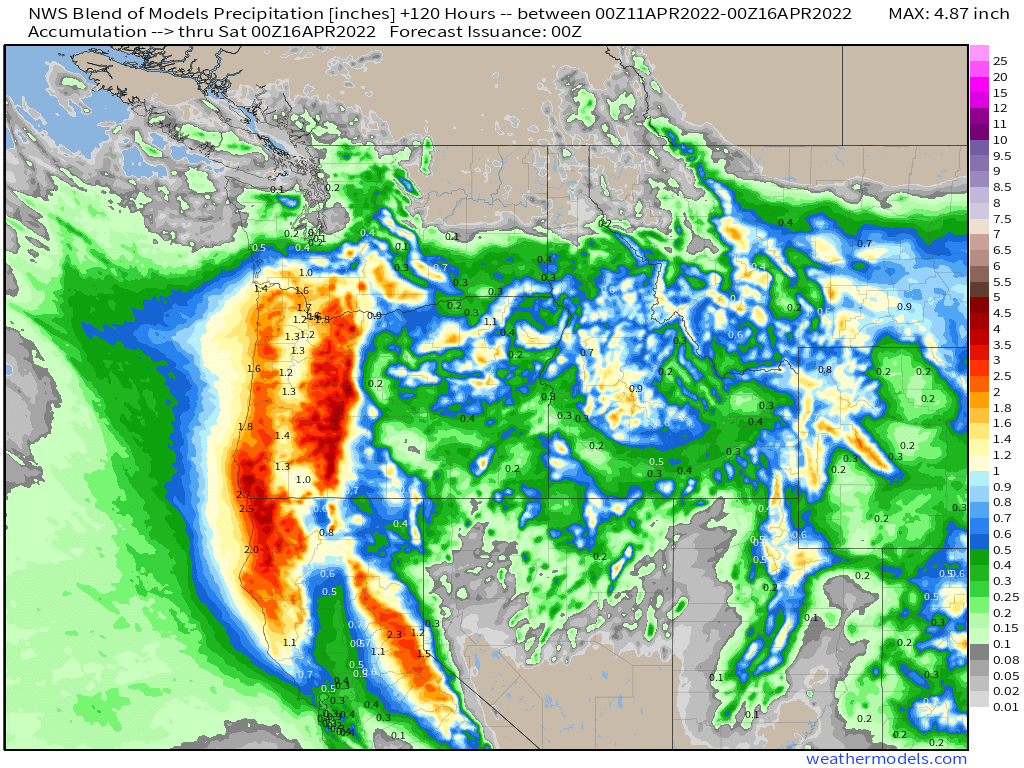
Out West, a series of low pressure systems will bring heavy rain and mountain snow to parts of the Pacific Northwest and Northern California this week. The first system moves in today and will be the strongest one, and will eventually become the system mentioned above that produces severe weather and blizzard conditions across the nation’s mid-section. A second system follows for Tuesday into early Wednesday, followed by a third one on Thursday. Rainfall totals of 1-3 inches and locally heavier are possible, especially near the coast from southern Washington into northern California. Heavy snow is likely across the Cascades and Sierra Nevada, as well as the coastal ranges. Many places could pick up anywhere from 1-3 feet of snow, with parts of the Cascades likely receiving even more than 3 feet. Across the Inland northwest, many places could see more than a foot of snow as the system pushes inland. It’s been a very dry winter for the most part across the West, so the rain and snow will be welcome news across the region as the dry season is quickly approaching.